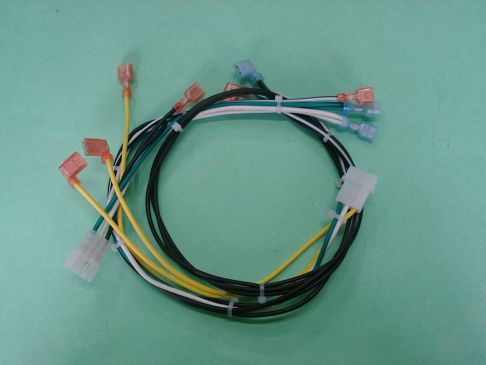Cables and wires are an indispensable part of our lives. Humans have depended on them for decades together to transmit power and information from one part to another. Technological advancements have improved many aspects of cable and wires such as design, manufacturing methods, equipment, raw materials used etc. Wire harnesses are a product of this relentless effort to experiment and innovate. Also known as cable assembly or cable harness, in this article we are going to briefly discuss its advantages and mainly discuss the 5 important stages of wire harness design.
Wire Harness- An Overview
Wire harness is manufactured like any other cable or wire, except for the fact that it includes a number of small wires within, with varying characteristics or not, connected to a single connector housing. Since multiple wires are powered by a common source and all of them transmit data/power to a single destination, a lot of time and money is saved on installation procedures. Also, since all the wires are bundled together using sleeves or shields, the tangling of wires is prevented, thus avoiding tripping hazards. Bundling them together reduces the overall wear and tear, and also helps in easier storage. Wire harnesses are extensively used in electronic devices, medical equipment, airplane manufacture and automobiles.
 5 Stages of Wire Harness Design
5 Stages of Wire Harness Design
The process that involves finalizing the raw materials required, considerations needed to be made before manufacture and steps to be followed during manufacture is known as the wire harness design. It mainly involves the below mentioned stages, which must be carried out with great care and precision.
1. Specifying the Characteristics
Every industrial sector is unique in its own way and has its own set of requirements. This is not an exception when it comes to the wire harness. In order to suit their specific requirements, clients will provide a set of characteristics they would need in the finished product. For example, specifications will be provided on conductor sizes, conductor type, insulation material, etc. and manufacturers have to produce accordingly. Also, certain transmission outcomes are desired and in order to achieve them, manufacturers must truly understand the purpose of the harness and characteristics required to achieve that. With this step, our wire harness design begins.
2. Crimp Connectors
Crimp connectors which are basically used to terminate the harness from both sides are as important as the wires within. During the wire harness design, the manufacturer has to accurately measure the length of the wires needed for the specification. Once the wires are cut to the defined length, other considerations such as the length requirement between contacts and length requirement between connector and wire ends have to be verified. Tests like pull test and continuity test must also be made to ensure that the wires and connectors are firmly placed together.
3. Insulation and Safety
Ensuring the safety and durability of the harness is an important stage in the process of wire harness design. Industries have extreme working conditions and wires are generally exposed to a lot of external factors such as abrasion, vibration, UV rays, shock and moisture in these working conditions. However, they can be protected from these factors for a long time, provided they are properly insulated. At this stage, all the necessary steps needed to ensure the safety of the wire harness are carried out. Few of those steps include deciding the type of labeling, shielding and insulation needed.
4. Substitutions
Many a times, it won’t be possible to find the exact raw material that is needed to achieve the desired outcome. However, in order to meet the delivery deadlines and still retain the desired outcome, we can make real-time modifications and come up with alternative materials and methods. During the process of wire harness design, one has to be ready for these immediate changes and quickly come up with feasible alternatives.
5. Identifying Errors
Lastly, before the wire harness is released to the market for sales, the finished product has to be tested for its design efficiency, transmission capability, durability, elasticity, insulation etc. While making these tests, one might uncover serious issues like crosstalk, signal/power interference, faulty grounding etc. Once recognized, it won’t take long to rectify these mistakes and release the finished wire harness (http://www.ehow.com/how_7526965_repair-wire-harness.html) to the market. Hence, identifying errors is also a major process in wire harness design.